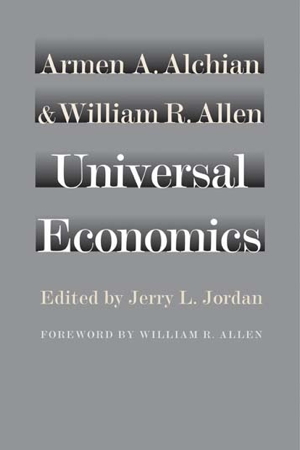To kick off the New Year, 60 minutes pulled out a man from yesteryears: Paul Ehrlich.
If you do not know who Ehrlich is, you are probably a young person. If you are above a certain age, you have heard of him, seen him on television, heard him on the radio or heard his ideas second-hand from someone.
This biologist from Stanford University was a media fixture in the 1960s and 1970s for his view (expressed in the best-seller The Population BombI) that overpopulation would lead to resource depletion and, ultimately, civilizational collapse. Ehrlich’s solution was coercive fertility control and rapid population decline to avoid the collapse.
In the 60 minutes segment, not much appeared to have changed to Ehrlich’s message. Doom is still coming. Overpopulation is still the root cause. Population control remains the only solution.
The consistency in messaging is jaw-dropping given how wrong Ehrlich was then and remains now. In fact, the errors and fallacies in Ehrlich’s reasoning have been identified multiple times since The Population Bomb was published. The errors can be identified in three blows that Ehrlich received – two of which were self-inflicted.
The first blow to Ehrlich’s view came from economist Julian Simon. In an article published in Social Science Quarterly, Simon taunted Ehrlich into taking a bet that would go directly at the foundations of their respective views. Unlike Ehrlich, Simon believed that politically and economically free societies could accommodate rapid population growth. In fact, the population growth would actually bring about more innovation, ideas and techniques that would lead to long-term improvements in material and environmental conditions. Relatively free markets would communicate information through price signals about which innovation would be the most socially valued. As such, resource depletion would never become a permanent problem in Simon’s worldview.
The bet consisted in picking the price of five key resources and evaluating their behavior over a decade. If prices increased, Ehrlich’s view would be vindicated because it confirmed that resource depletion (demand outstripping supply). If they decreased or remained stable, Simon would be vindicated as innovative actors responded to scarcity by investing in new technologies, techniques and methods. This behavior would bring prices back down. Simon won the wager, as prices for the five commodities declined in the wager period of 1980 to 1990.
Somewhat bitterly, Ehrlich proposed a counter-wager which – inadvertently – unveiled many flawed assumptions in his reasoning. In the counter-wager, Ehrlich suggested focusing on (among others) wild fisheries catch per capita, firewood supply per capita, biodiversity, forest cover, atmospheric pollution, HIV-aids prevalence, and agricultural land.
Had Simon not refused the wager, Ehrlich would have won 9 of the 15 claims between 1992 and today. But the victory is more technical than anything. For example, the supply of firewood did fall but that is not because forest cover fell (it actually increased since the 1980s) but because better technologies became available as substitutes. The catch of wild fish did fall in per-capita terms, but the total supply of fish products per capita increased by 27 percent, in large part thanks to aquaculture which is far cheaper now than before.
Moreover, some of Ehrlich’s victories actually contradict his assumption. This is the case with biodiversity. According to Ehrlich, it was overpopulation and overconsumption that would lead to losses in biodiversity. As such, richer areas should see losses first. This is not what we see. Indeed, biodiversity was picking up in richer areas, even when there were losses globally. As Simon argued that global enrichment would eventually reverse any environmental damage, Simon ends up winning on the fundamentals.
All these examples show the eternal flaw in Ehrlich’s reasoning that continually led him astray: he assumes those environmental indicators are relevant in and of themselves. This is not true. Indicators have relevance only in proportion to their influence on human welfare.
Take the firewood example again. In poor societies, where biomass is the only source of fuel, a decline in the supply of firewood is a sign of resource depletion. But if the supply declines because new technologies allow households to switch to other resources, or because higher real incomes allow them to purchase substitute goods, then the decline is actually a positive development.
After all, the supply of firewood in the United States today is less than 1 cord per capita today. In the late 18th century, households consumed more than 20 cords. Between then and now, the United States actually saw a return of its forests (forest cover has increased continually since the 1910s). The fall in the supply of firewood is thus a sign of improvements, as we now need less wood than ever before.
In Ehrlich’s worldview, humanity only transgresses and can only cause harm. In Simon’s view, humanity takes primacy and the sources of its enrichment also repair many harms done to the environment, and eventually allows improvements.
The third error in Ehrlich’s reasoning is also self-inflicted. Reflecting somewhat bitterly on the wager decades later, Ehrlich scorned Simon’s naïve view of the ability of free societies to innovate around environmental problems. Obviously and unsurprisingly, he argued that coercive state measures remained the only way forward. Yet, this stubborn commitment to the same solutions over some 30 years suggests that Ehrlich never learned or read his opponents’ work. Indeed, Simon frequently argued that environmental problems could be created by governments who were expected to enact solutions.
Take climate change, where environmental indicators seem favorable to Ehrlich’s worldview. The assumption is that climate change is simply the byproduct of economic activity with large externalities in the form of greenhouse gasses. Markets created these externalities because of humanity’s obsession with the goods and services they delivered.
Governments, however, frequently shaped incentives in a counter-productive manner. Governments have offered numerous subsidies that encourage greater fuel consumption, and cutting these subsidies might reduce greenhouse gas emissions between 7 percent and 30 percent. Simply put, climate change can be “statogenic” (caused by governments).
Simon recognized this and it is why he argued that economic freedom was a crucial ingredient. Ehrlich never did and continually shows that he assumes nothing good can come out of letting markets work and nothing bad could come out of letting governments do more work.
These major flaws all illustrate that Ehrlich has never learned anything about why he might be wrong. We should not treat him as an example, nor should we listen or consider his opinions.









































